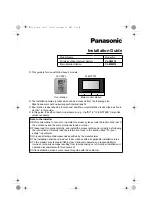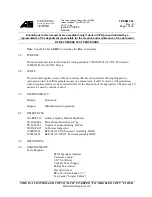
Chapter 8
H-Infinity Synthesis
©
National Instruments Corporation
8-5
Xmath Interactive Control Design Module
If either of these singular values is equal to or exceeds
γ
, the
γ
-entropy is
defined to be +
∞
.
In other words, the
γ
-entropy is finite only for
, and rapidly
increases to +
∞
as
becomes close to
γ
, where the H
∞
-norm is
defined as:
Refer to Chapters 5 and 12 of
Linear Controller Design
, Boyd and Barratt,
Prentice-Hall 1991, for some interpretations of the
γ
-entropy.
Therefore, the controller designed will always satisfy
. For this
reason,
γ
is sometimes called the H
∞
performance level. For
γ
, which is too
small, there may be no controller that can achieve the required performance
level.
For large
γ
, the
γ
-entropy of
H
is very nearly the same as the LQG cost with
the same parameters (
ρ
and
ν
), so the H
∞
controller will be nearly the same
as the LQG controller with the same values of
ρ
and
ν
.
Output Weight Editing
When
Weight Zero Edit
is enabled, the user can graphically edit the
output weight transfer function
W
. The weighting transfer function is
given by:
Its denominator is fixed and equal to the numerator of the plant transfer
function; its numerator can be manipulated by the user.
The lower left plot shows the poles and zeros of the weight transfer
function
W
. When
Weight Zero Edit
is enabled, the user can grab and
drag the zeros shown, or
Add/Delete/Edit
zeros using the push buttons.
The lower right plot shows the magnitude of the weight transfer function.
When it is flat and equal to 0 dB for all frequencies, you have
W
= 1; that
is, standard (unweighted) design.
H
∞
γ
<
H
∞
H
∞
max
σ
1
H j
ω
( )
(
)
=
0
ω
∞
≤
≤
H
∞
γ
<
W s
( )
n
w
s
( )
n
p
s
( )
------------
=
















































